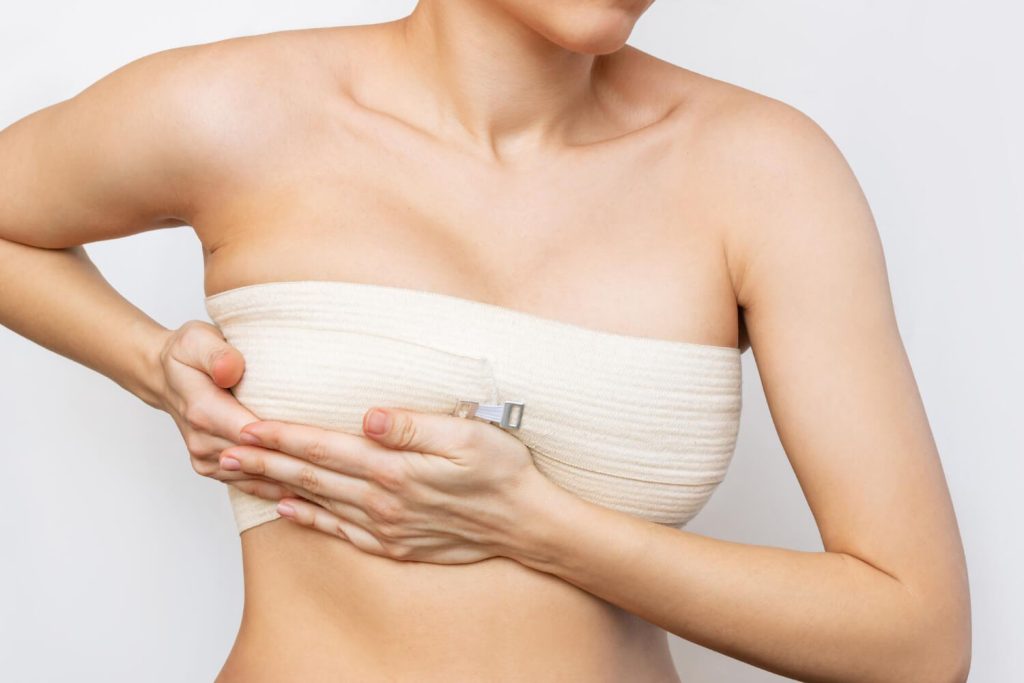Had a breast reduction and now worried about scars? Totally common. After surgery, this tends to be one of the main topics during follow-up appointments. It feels overwhelming to see your body changing and wonder how the skin will heal.
A lot of things can affect this, from how you take care of yourself in the first few days to the kind of products you use later on. And it’s not always clear what actually helps. So if the goal is minimizing scars post-breast reduction, it makes sense to understand a few key points before trying random tips you find online.
Here, you’ll find 8 simple tips often recommended by plastic surgeons. All focused on helping you support your recovery and reduce marks that could bother you later.
1. Follow post-op instructions from your surgeon
Following post-op instructions plays a big role in minimizing scars post-breast reduction. Every guideline given by the surgeon considers the type of incision, the expected recovery timeline, and how the skin usually heals.
The first few days require extra care. Avoiding sudden movements, sticking to the compression bra, and protecting the area from impact help reduce tension on the incision line. When that happens, scars tend to look less noticeable.
Some surgeons recommend using silicone sheets within the first weeks. Others suggest waiting until the skin fully heals before applying anything. Asking about this during follow-up visits helps prevent products or techniques from interfering with minimizing scars post-breast reduction.
If any questions come up between appointments, calling or messaging the office often avoids small mistakes that could affect how the scar looks over time.
2. Keep the incision site clean and dry
Taking care of the incision site supports minimizing scars post-breast reduction. A clean and dry environment gives the skin the chance to heal without complications.
Daily hygiene needs attention. Using mild, fragrance-free soap helps reduce the risk of irritation. Gently patting the area dry instead of rubbing prevents damage to the healing tissue.
Moisture buildup creates a space where bacteria grow easily. Wearing loose, breathable clothing and changing dressings as directed by the surgeon avoids this. Every small step contributes to minimizing scars post-breast reduction during the most delicate healing phase.
At signs of redness, unusual swelling, or discharge, contacting the care team quickly becomes important. Early action often prevents setbacks that affect scar appearance.
3. Use silicone-based products on healed skin
Applying silicone-based products becomes part of minimizing scars post-breast reduction once the incision fully closes. Silicone sheets and gels create a protective barrier that controls moisture loss and supports a smoother healing process.
Most surgeons suggest starting silicone treatments around two to three weeks after surgery, depending on how the wound looks. Using these products as directed — usually once or twice a day — fits into the daily routine without much effort.
Selecting medical-grade silicone products gives better consistency. Checking with the surgeon before starting anything helps ensure the right timing for minimizing scars post-breast reduction.
If irritation or discomfort happens, stopping the use and getting professional advice avoids making healing more difficult.
4. Avoid sun exposure on scars
Protecting scars from sun exposure plays a key part in minimizing scars post-breast reduction. UV rays darken healing skin and create permanent color changes that become harder to treat later.
Using broad-spectrum sunscreen with zinc oxide, wearing protective clothing, and staying in the shade when outdoors helps maintain even skin tone during recovery. Most plastic surgeons recommend keeping scars fully protected for at least six months after surgery.
Daily consistency matters. Applying sunscreen every morning and reapplying when needed fits easily into post-op care routines. Skipping sun protection risks delaying progress in minimizing scars post-breast reduction.
Checking scars regularly for any changes in color or texture brings more awareness to healing and helps identify issues early.
5. Wear compression bras as instructed
Wearing compression bras supports minimizing scars post-breast reduction by reducing tension on healing tissues. Proper compression controls swelling, keeps incisions stable, and helps the skin settle into a smoother contour.
Surgeons usually advise wearing a compression bra continuously for several weeks after surgery. Some cases extend this period depending on how the body responds to healing.
Choosing a compression bra designed specifically for post-surgical use improves comfort and results. High-quality options provide gentle but consistent support without irritating the incision lines, contributing to minimizing scars post-breast reduction.
Following the wear schedule, including nighttime use if recommended, reinforces the healing process and keeps unwanted stretching from forming along the scars.
6. Don’t pick at scabs or peel healing skin
Leaving scabs and healing skin untouched supports minimizing scars post-breast reduction. Picking or peeling disrupts the natural healing process and increases the chances of more visible or uneven scars.
Itching often happens during recovery. Instead of scratching, lightly pressing around the area or using approved soothing products helps manage the discomfort without harming the skin.
Surgeons usually advise letting the body shed scabs naturally. Removing them too early exposes delicate new skin, making minimizing scars post-breast reduction more difficult.
Staying aware of habits, especially while sleeping or distracted, avoids unintentional picking that slows down recovery.
7. Incorporate gentle scar massage
Light pressure across the scar line promotes better blood flow and supports more flexible healing.
Most surgeons suggest starting scar massage around three to four weeks after surgery, once the incisions close and swelling decreases. Massaging with clean hands and using circular motions for a few minutes each day fits easily into the post-op routine.
Choosing a fragrance-free moisturizer or a product recommended by the care team prevents irritation. Sticking to a consistent schedule strengthens efforts toward minimizing scars post-breast reduction over time.
Watching for signs like redness or discomfort helps adjust the technique early, avoiding additional trauma to the healing area.
8. Ask your provider about advanced scar treatments
Exploring advanced options may support minimizing scars post-breast reduction when home care alone does not meet expectations. Treatments like laser therapy, microneedling, or corticosteroid injections help improve the texture and appearance of mature scars.
Most surgeons recommend waiting at least six months after surgery before considering advanced interventions. This timeline gives the body enough time to complete the initial healing phase naturally.
Scheduling a consultation allows a provider to assess the scar properly and suggest a customized plan for minimizing scars post-breast reduction. Choosing a board-certified plastic surgeon ensures treatments match the needs of post-surgical skin.
Following professional advice on timing, frequency, and aftercare strengthens the chances of achieving smoother, less noticeable scars over time.
How long do breast reduction scars take to fade?
Breast reduction scars usually start softening and lightening within a few months after surgery. Most patients notice significant fading between 6 and 12 months, depending on skin type, healing response, and scar care practices.
Some scars keep changing for up to two years before reaching their final appearance. Regular follow-ups with the surgeon help monitor healing and offer more options if additional treatments become needed.
Can I use bio-oil or vitamin E on my scar?
Using Bio-Oil or vitamin E on scars after breast reduction remains a common practice, but results vary. Some patients report softer skin and slight improvement in scar texture, while others experience irritation or allergic reactions.
Most surgeons recommend waiting until the incision fully heals before applying any oils. Starting too early could interfere with minimizing scars post-breast reduction by irritating fragile skin.
Before using any over-the-counter product, checking with the surgeon avoids potential issues. Medical-grade silicone products often show more consistent results for scar management compared to oils alone.
Taking simple steps at the right time helps a lot with minimizing scars post-breast reduction. Every recovery looks different, but having clear guidance makes the process easier and more predictable.
Patients who stay connected with their care team often feel more confident during healing. Regular check-ins open doors for personalized advice and better long-term results.
Want expert support through every step of your journey?
Meet the team at Smart Plastic Surgery in Miami. Personalized care, advanced techniques, and follow-up you can trust.



